When you go back several decades and think of iconic BMWs, the M5 must be included in the top three of anyone’s list. When it first hit the streets in the mid-1980s, the M5 instantly became the favourite sedan of enthusiasts everywhere. It was the benchmark for performance sedans then, and many would call the latest edition, the sixth generation, more of the same.
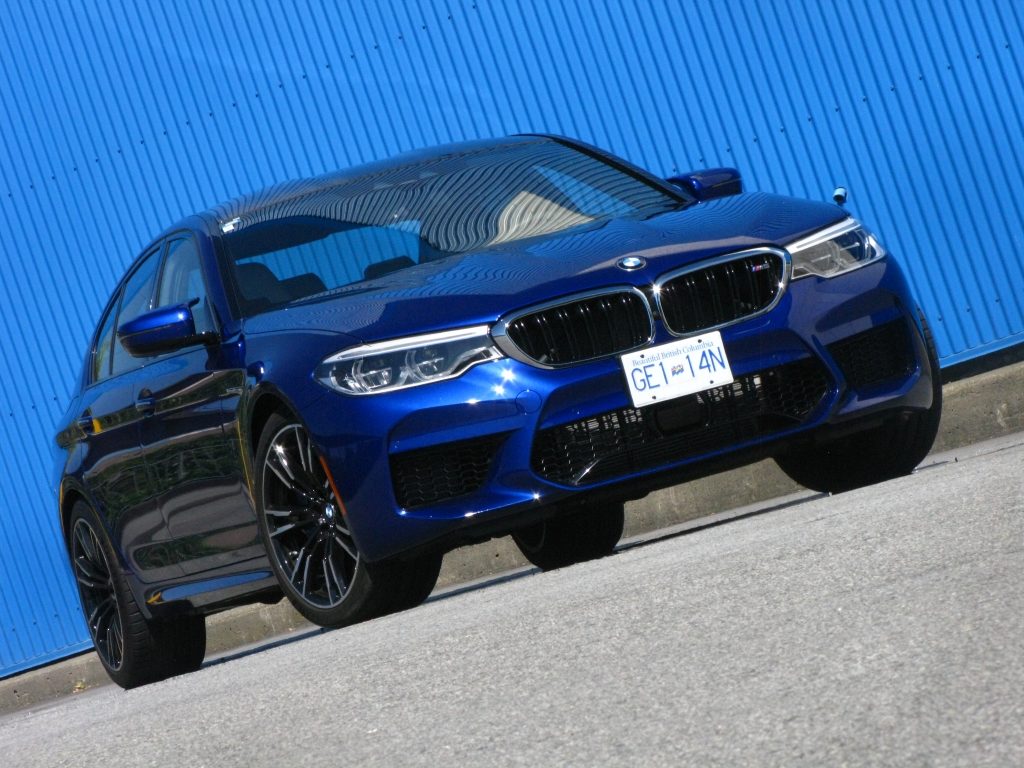
The last couple of generations of M5 had, in the eyes of some purists, lost its way, with SMG and then dual-clutch manumatic transmissions not proving to be popular, and higher weight leading to complaints about loss of fun and dynamic feel.
So, BMW knew what they had to do with the new M5, and it has undergone some significant changes in the drivetrain area. For the first time, there is no manual transmission available, not an uncommon situation in this level of German car, but still a bit of a surprise coming from this company. The sole transmission is a heavy-duty ZF 8-speed torque-converter automatic, and the power goes from there to….wait for it….all four wheels.
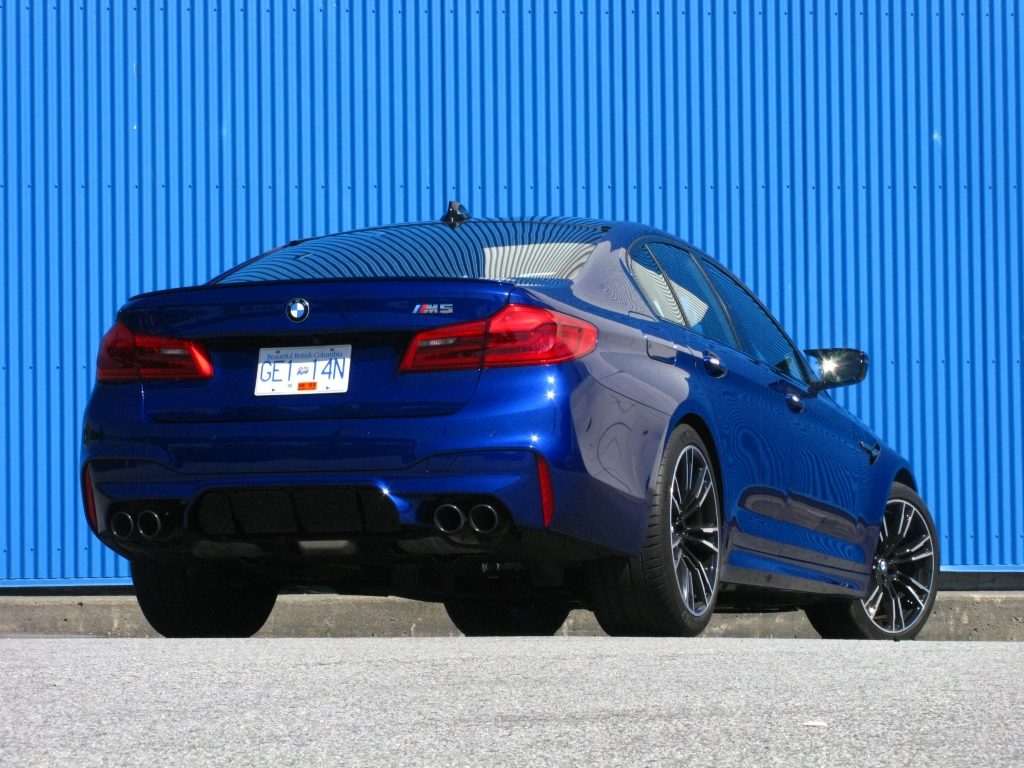
Yes, one of the last bastions of rear-wheel drive has gone AWD, but the situation is not as dire as M5 lovers might at first conclude. Thanks to the wonders of electronics and the fully variable centre and rear differentials, the M xDrive AWD is mostly rear-biased in normal driving; the power is only directed to the front wheels when needed, and can be shut down entirely in the 2WD setting. So those who might enjoy drifting their M5 can still do that. Meanwhile, acceleration is said to be quicker with AWD, logically enough, with a 0-to-100 km/h time of 3.4 seconds being claimed.
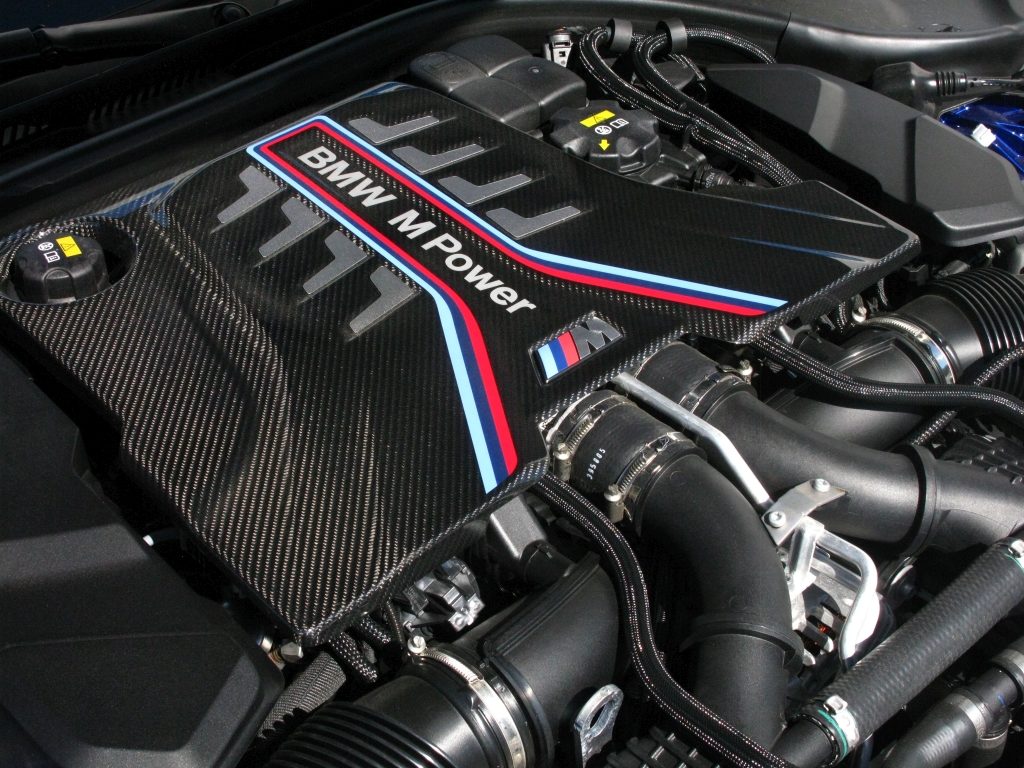
The power to do that comes from a 4.4-litre twin-turbo V8 which is a hopped-up version of the previous generation’s engine, now with 600 horsepower and 553 lb-ft of torque, claimed in some quarters to be conservative numbers. Whatever the actual output, it goes without saying that putting your foot into the M5’s throttle results in rather forceful acceleration, and independent tests have yielded quarter-mile times of 10.9 seconds at 129 mph.
The M5’s chassis is, of course, fully capable of offering up levels of lateral acceleration and deceleration commensurate with the forward speed. Really, you need a track to get safely near the full capabilities of the M5. It’s almost hard to believe that a fairly large sedan that weighs 1,982 kg – 40 kg less than the last generation despite the heavier AWD system – can be so agile and dynamic, but it is. The hood and front fenders are aluminum, while the roof is carbon fibre-reinforced plastic. You can’t have a sunroof in an M5.
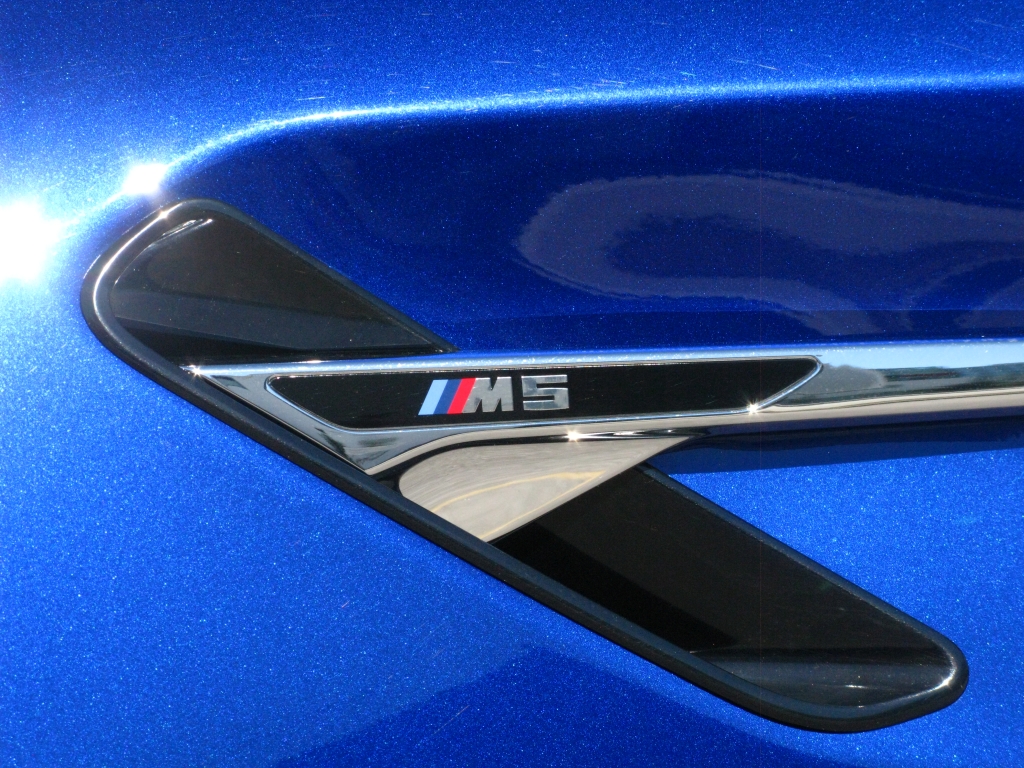
There is a wide range of options for configuring the vehicle, including M xDrive, the 8-speed M Steptronic with Drivelogic, the M-specific Variable Damper Control (including three driving modes: Comfort, Sport and Sport Plus) with electronically-controlled shock absorbers and M Servotronic steering (including three driving modes: Comfort, Sport and Sport Plus). Once you have figured out the combinations you prefer for a couple of the driving scenarios you encounter most often, you can set them via the red M1 and M2 buttons next to the shift paddles on the steering wheel, and call them up instantly when needed.
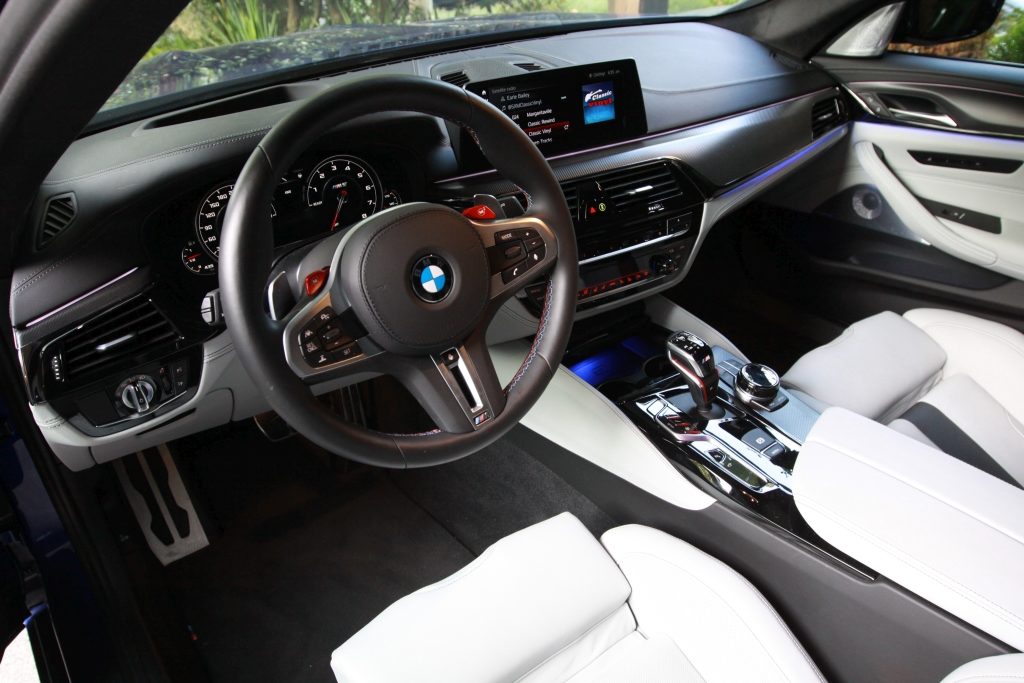
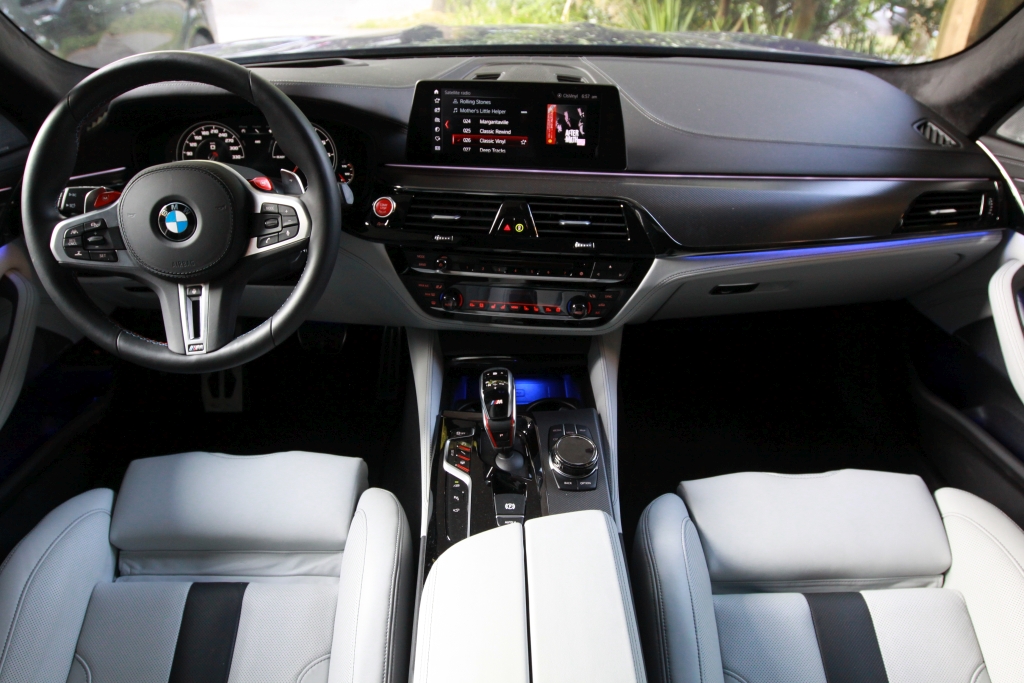
The design of the M5 is somewhat understated, as one might have hoped for with a car of such capabilities. The giveaways are, of course, the big wheels and brakes, the gaping air intakes, and the snarl of the exhaust when set to Sport mode. Our tester, and indeed every M5 we have seen in photos, has been slathered in an incredibly deep-looking Marina Blue Metallic paint, a $4,900 option.
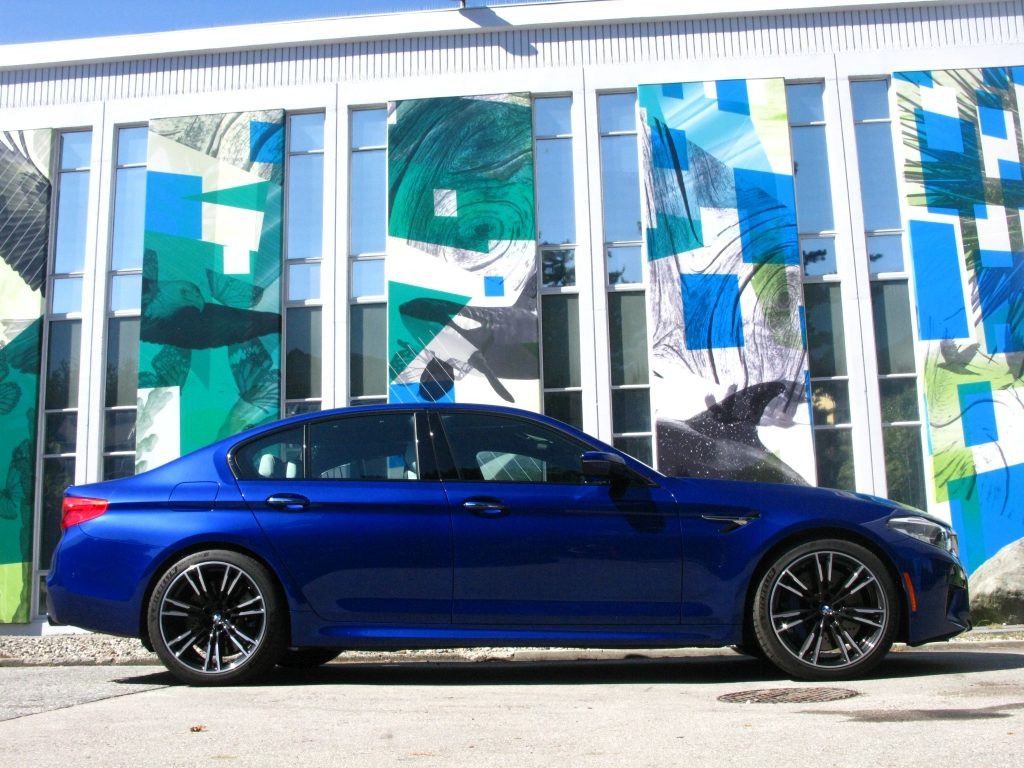
Inside, think 5-Series with bigger sport seats and more controls for all the variable settings. The trim on our tester was Silverstone (nearly white) Full Merino Leather with black contrast, and it was quite stunning. As was the $4,900 Bowers & Wilkins Diamond Surround Audio. It takes a while to get accustomed to all the settings available to the driver, but for most street driving, setting everything to “Comfort” will yield a smooth, quiet ride like any 5-Series. In our experience, driving any length of time in the Sport modes will make you feel that a sense of physical commitment is necessary to keep “on top of” the capabilities of the car.
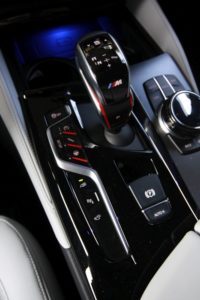
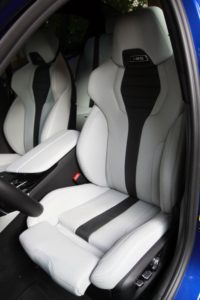
So, is the new M5 still the benchmark for performance sedans? It certainly is more than a worthy successor to the last couple of generations, as BMW has used technology and lots of power to put supreme performance into what is a big sedan. If an M5 is all you’ve ever wanted, then you won’t be disappointed. But like all cars with so much power, one needs to decide if and where one will be able to experience the upper end of its performance capabilities. Those with access to a race track will be able to satisfy that need for speed with the M5. Otherwise, a more “regular” 5-Series, like the very capable M550i, might suffice.
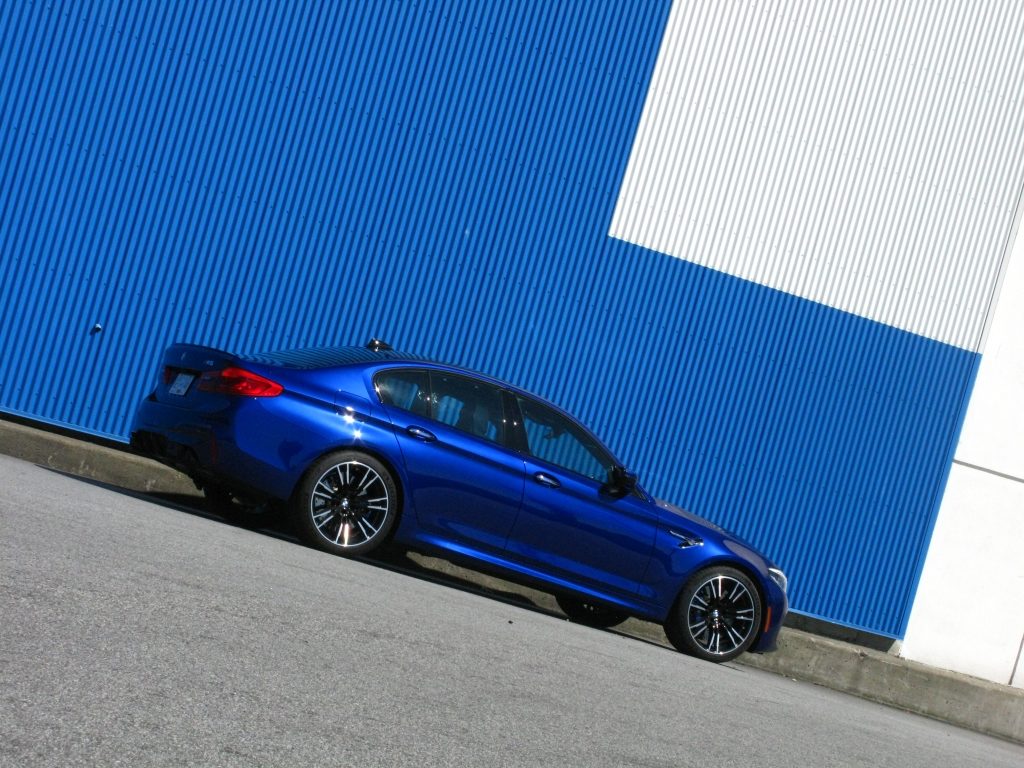
SPECIFICATIONS:
- Base MSRP: $113,300
- Price as tested: $133,800
- Type of vehicle: Front-engine, AWD 4-door sedan
- Engine: 4.4L DOHC Twin-Turbo V8
- Power: 600 hp @ 5,700-6,600 rpm
- Torque: 553 lb-ft @ 1,800-5,700 rpm
- Transmission: 8-speed automatic
- Brakes: Four-wheel disc with ABS
- Tires: 275/35ZR20 front, 285/35 ZR20 rear
- Curb weight: 1,982 kg
- Acceleration, 0-100 km/h: 3.4 sec.
- Fuel Consumption (L/100 km) observed, combined: 13.1




